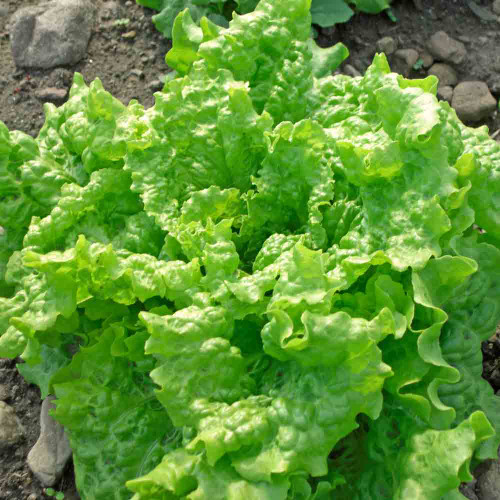Description
Epazote – Meet the Wild Child of Your Herb Garden
There is an annual Mexican herb whose scent is like a wild symphony – the initial hit can be intensely peppery or citrusy, followed by a lingering mix of mint, oregano, a touch of savory earthiness, and perhaps even a whiff of camphor. It's a plant that makes you pause, sniff the air, and wonder... what is that? Its aroma splits opinions – some adore its sharp edge, reminiscent of citrus and fuel, while others recoil at its intensity. Gardeners and chefs in the know have the answer – once this assertive herb finds its place in a dish… magic happens. It’s a key ingredient in many classic Latin dishes, adding a unique depth of flavor to bean soups, quesadillas, and stews. This is the one-of-a-kind herb that will transform your idea of flavor, and its name is Epazote (pronounced eh-puh-ZOE-tay).
The same pungent aroma that makes epazote's flavor profile so unique makes it an effective natural pest deterrent in the garden. Its strong scent can help confuse and repel pest insects, making it a valuable companion plant in your garden.
Details
Epazote is a bushy annual herb that, if left to its own devices, creates a lively and even somewhat wild-looking patch that adds a touch of untamed charm. Plants can reach heights between 2 and 4 feet, sometimes even taller in rich soil and warm conditions. A central stem develops numerous side branches laden with slender, spear-shaped, deeply toothed leaves. The serrated leaves give the plant a distinct textured look, and their vibrant green hue adds a splash of fresh color. Along its stems, epazote produces clusters of tiny, inconspicuous green flowers that bloom in clusters. These blooms mature into an abundance of small, dark seeds that the plant readily releases, ensuring future generations of epazote in your garden.
History
Epazote's roots stretch deep into Central and South American history, where it flourished as an essential ingredient in both traditional cuisine and medicine. Archaeological evidence places its use within the culinary and medicinal practices of the ancient Aztecs, Mayans, and other indigenous groups of Central America. This resilient herb spread through trade networks, eventually making its way around the globe.
Early European records offer a glimpse into how epazote was perceived and used. Spanish physician Francisco Hernández was sent to study the natural resources of Mexico in 1570 and wrote extensively about the plant in his work Rerum Medicarum Novae Hispaniae Thesaurus (Treasures of the Medicinal Plants of New Spain), describing it as an aromatic herb with multiple properties and uses. Franciscan friar Bernardino de Sahagún included epazote in his famous Florentine Codex, written in 1569, a detailed documentation of Aztec culture. Sahagún echoed Hernandez's observations about its medicinal uses and expanded them to include potential applications for relieving gas and respiratory problems. The Badianus Manuscript of 1552, an Aztec herbal document, further solidifies our understanding of epazote's significance. It features illustrations of the plant alongside descriptions focusing on its medicinal properties and emphasizes its role in maintaining a healthy digestive system.
Epazote's rich history shows in its diverse names across different cultures. Its original name, Epazotl, stems from the Nahuatl language spoken by the Aztecs, showcasing its deep roots in Central American traditions. As this herb spread to other parts of Latin America, it picked up new names. In certain regions of South America, it's known as Paico, reflecting local linguistic variations. The Spanish name Yerba de Santa Maria translates to "St. Mary's Herb." This name might hint at either the herb's traditional use in religious practices or its potential medicinal applications observed by Spanish missionaries who encountered the plant. Some, like "wormseed" and "Mexican Tea," hint at its traditional uses.
Uses
In the Kitchen: Epazote shines brightest in traditional Mexican and Latin American dishes that use its fresh leaves. It's a cornerstone ingredient in classic bean dishes, adding a depth of earthy, citrusy flavor with a dash of herbal complexity that can't be replicated by any other spice or herb. Be bold and venture beyond beans! Soups, stews, rustic mushroom dishes, and even quesadillas benefit from epazote's unique touch. But remember, a little goes a very long way – start with a tiny amount and taste as you go!
Epazote's reputation for reducing the less pleasant side effects of eating beans isn't just folklore. It contains compounds like ascaridole and limonene that may help ease digestion. Carminatives in epazote offer potential relief from gas and bloating, while other compounds might help settle an upset stomach. This aligns with the traditional use of epazote as a digestive aid, making it a delicious and practical addition to bean dishes.
Preserving the Flavor: While fresh epazote is always best, the leaves can be dried for use later. Please note that drying will diminish some of its flavor intensity, so adjust quantities accordingly when using dried epazote.
Companion Planting
Beneficial companions include beans, squash, and Brassicas (think broccoli and cabbage).
Epazote is not the best companion for most root vegetables.
Pest and Disease Management
Flea beetles and aphids can sometimes be an issue. You have several natural options to keep pests at bay: neem oil, insecticidal soap, or companion plants like marigolds or nasturtiums, encouraging beneficial insects like ladybugs.
Planting and Growing Tips
Choose a sunny spot in your garden. Epazote loves full sun, so pick a location that receives at least 6 hours of direct sunlight daily. As it is a native of warmer climates, it's important to wait until the soil has warmed up and the danger of frost has passed before planting.
Space epazote plants 12-18 inches apart for healthy growth and disease prevention to ensure good airflow. While epazote is quite adaptable to different soils, providing it with a well-draining bed will set it up for success. It's generally best to direct sow epazote seeds right into your prepared garden soil. Remember, epazote seeds need light to sprout, so scatter them on the surface and either press seeds gently into the soil or cover them very lightly with soil.
Epazote’s ability to self-seed often catches gardeners by surprise. If left unchecked, this prolific plant can quickly spread, potentially crowding out other desired plants. To avoid an epazote takeover, consider these management strategies –
Proactive Seed Control: The key to controlling epazote's spread is to prevent the plants from setting seed. Regularly deadhead spent flowers before they have a chance to mature. You could also choose to harvest the seeds themselves – epazote seed is edible and adds a bit of epazote's unique flavor to dishes.
Strategic Containment: If you have concerns about epazote becoming too enthusiastic in your garden, planting it in containers is a great option. This allows you to enjoy its unique flavor and companion planting benefits while keeping its spread in check. Additionally, consider planting epazote along borders or in clearly defined areas where you wouldn't mind its self-seeding tendencies.
Harvest Tips
Harvest Time: It's best to harvest epazote leaves young and tender in the morning when their flavor is most vibrant. Feel free to harvest as needed throughout the growing season, especially the younger leaves. As the plant matures and begins to flower, the flavor intensifies significantly. Adjust how much you use in your cooking; a little will go a long way with older leaves.
Keep it Growing: Regular harvesting encourages your epazote plant to become bushy and full. Don't be afraid to prune it back – this will help control its size and promote fresh, flavorful new growth.
Saving for Later: While fresh epazote is ideal, you can preserve some for later use. Drying epazote leaves is possible, but be aware that they'll lose some flavor potency compared to fresh ones.
Learn More
From the soil to the seed to the food you eat - we'll help you grow your best garden!
4 Reviews
-
Great Service
Very quick delivery, cannot wait for plants to mature.
-
Mexican herb
Have not tried to germinate this yet, but plan to soon! Saw a chef growing his epazote in a container. Seeds are tiny so should be easy to germinate. May have waited too late to sow in garden. Chef seemed very happy with the flavor of this Mexican herb.
-
Epazote
Seeds sprouted well and are growing. Plants are not old enough to rate taste.
-
So MUCH!!
This did so well in the garden I didnt know what to do with it, so I gave it out to every latino that I know. They said they have never seen such large leaved flavorful epazote before, and all wanted to know where I got it from.















